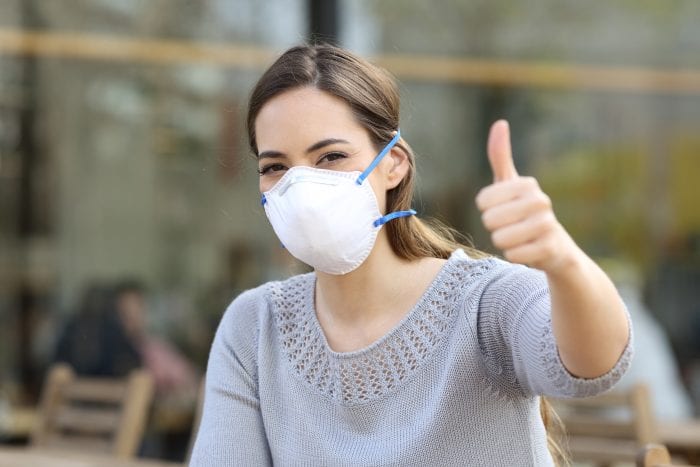Between You and Me: Masks Might be Useful in A Poker Game
By Leah S. Dunaief

This is the year we all disappeared behind our masks. “Who is that masked man?” people would ask about the Lone Ranger, as he rode the range decades ago in every child’s imagination and kept the peace. Now they might ask the same question of us, masked men and women and children, as we peacefully go about our new freedoms of shopping and ordering meals for alfresco dining. We are not always immediately recognizable behind the variety of face coverings we see on the streets. The importance of wearing a mask has been accepted by almost everyone, and with good reason. An example of the benefits can be found in Japan.
According to Motoko Rich, a reporter for The New York Times, face coverings are common in Japan during flu and hay fever seasons, on crowded public transportation when commuters commonly have colds and even when women “don’t want to bother putting on makeup.” Mask sightings are routine.
Could that be the explanation for Japan’s surprisingly low number of victims of COVID-19 compared to other countries?
Initially, we Americans were advised not to wear masks, that they were unnecessary and should be saved for hospital workers. We all know what happened next. Cases of novel coronavirus spiked and the number of deaths exceeded the capacity of morgues and funeral homes for weeks. We were directed to shelter-in-place. Yet in Japan, which did not order a lockdown or massive testing or emphasize social distancing, and kept karaoke bars open and public transportation packed, terrible spikes in cases and deaths did not occur. The numbers there were 17,000 infections and 900 deaths. Yes, they have a smaller population, but in the United States, whose residents number two-and-one-half times that of Japan, some 1.9 million have fallen ill and 110,000 have died.
Eventually bars and businesses did close, and schools were shut early, as cultural and sports events were canceled, but note that none of those restrictions was mandatory. What the people did do was to nearly universally don masks. That response follows a cultural tradition of hundreds of years. Between the 17th and 19th centuries, mining workers used masks to prevent inhaling dust. The Japanese wore them during the 1918 flu epidemic and more recently during SARS and MERS outbreaks, as well as to protect against pollution and pollen. The country was “relatively unscathed,” during the epidemics, according to Motoko Rich.
Members of the scientific community weigh in on the matter. “I think there is definitely evidence coming out of COVID that Japan, as well as other countries which practice mask-wearing, tend to do much better in flattening the curve,” said Akiko Iwasaki, a professor of immunobiology at Yale, as quoted in the NYT.
Masks can block respiratory droplets that are emitted when people speak, cough or sneeze. Those droplets may carry the virus, even when the wearer has no symptoms, and hence transmit the disease if not captured by the mask.
The reporter goes on to emphasize that masks alone are not sufficient to prevent disease, that social distancing is also required. Even with masks, crowds are a danger for the spread of infection. It will be informative to learn the unintended health consequences of the many protests against racism, triggered by George Floyd’s death under the knee of a police officer, that have occurred over the past two weeks. Most of those protesters, crowded together, seemed to be wearing masks.
From my travels to Japan, I would add a couple of cultural differences to this story. We found the Japanese to bow rather than shake hands and to be a little physically distant with each other rather than hugging often. Their country is, for the most part, amazingly clean and uncluttered, and they seem fastidious about themselves. These traits would also argue in favor of less contagion when disease is present.
I would also like to predict that masks — designer, decorated, color coordinated, whatever — will be with us well after the pandemic ends.







